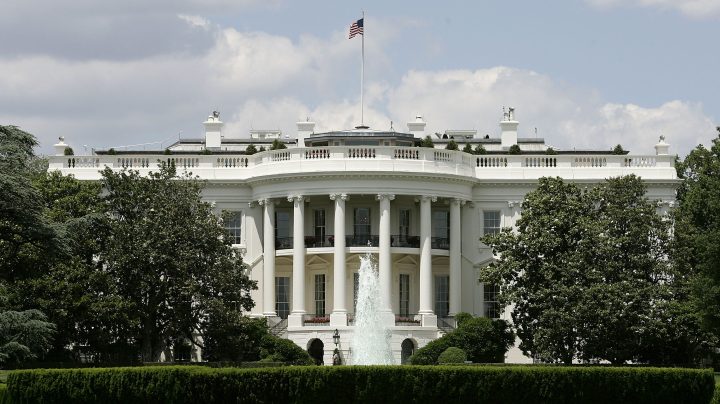
Why Republican consumers are glum and Democrats upbeat

Consumer sentiment started to climb out of a deep, inflation-induced hole in August with a modest increase from July’s level, according to the University of Michigan’s survey.
But digging into the weeds of the consumer sentiment data reveals significant variations among the groups surveyed, based on income, age, race, education level and party affiliation.
While the University of Michigan’s index of consumer sentiment rose nearly 7 points overall, it improved just 4 points among Republican consumers, while it climbed 9 points among Democratic consumers. And Democrats were way more optimistic about the economy than Republicans to begin with — by double digits.
Throughout U.S. history, political parties — from early 19th century Whigs and Democrats to today’s Democrats and Republicans — have had different takes on the economy. But since the start of the Barack Obama administration in 2009, the partisan divide has widened and become more entrenched.
“We see that in our data very, very clearly,” said John Leer, chief economist at polling firm Morning Consult. “When a Republican is in the White House, Republicans are more confident about the broader macroeconomy. And the inverse is true when Democrats are in the White House.”
The dynamic played out starkly early in the COVID-19 pandemic, when the economy shut down and most consumers suddenly became very worried. But, with President Donald Trump in the White House, “Republicans stayed more confident in the economy, I think primarily for political reasons, to sort of showcase support for the tribe and that COVID wasn’t that big of a deal. And then when the election happened in 2020, all of a sudden Republican confidence declined relatively quickly, and Democratic confidence shot up.”
In a matter of weeks, Democratic and Republican consumers switched places: They moved 20% to 30% in the opposite direction, according to consumer sentiment tracking by Ipsos and the University of Michigan. “Now, the economy didn’t fundamentally change in November 2020,” said Chris Jackson of Ipsos. “But the politics did. That really shows how increasingly our views of the economy are being filtered through that political lens.”

And each party’s consumers now move in lockstep — no matter where they sit in the economy, explained Joanne Hsu, director of the University of Michigan’s consumer surveys. “Demographic differences don’t explain the partisan difference. When we look at sentiment by age, by education, by income — none of these gaps is anywhere near the size of the gap between Democrats and Republicans.”
There are some things that happen in an economy that neither party’s consumers like, for instance, sharply rising prices. Jackson said Ipsos’ survey data found that both Democrats and Republicans are bummed out by 40-year-high inflation. But “when we ask people: ‘What are you more concerned about?’ Republicans almost 2 to 1 will say ‘inflation’ more than Democrats will. We would assume that everyone’s sort of paying the same costs, but they’re not necessarily talking about it as the same level of pain.”
Then there’s the job market. Republicans aren’t losing jobs any faster than Democrats. They’re just more worried about it happening to them, Jackson said.
Although maybe there’s another explanation for this partisan anxiety gap: economic geography. Americans are becoming increasingly segregated — living in more racially, ethnically and politically homogeneous regions and communities. They work, play, pursue hobbies like hunting or marathon running, consume and share news and social media with people likely to be of the same political party and ideology.
“Different than it was, let’s say, in the 1950s, Democrats and Republicans live very, very different lives,” said Leer at Morning Consult. “Living in a rural area or in the middle of a city, your homeownership is likely different. One’s a renter, one’s probably an owner; the amount of time you spend on public transport is very different.”
And, these partisan-tinged regions and types of communities have not prospered equally in recent years, said political analyst Bill Galston, a senior fellow at the Brookings Institution. “It is certainly the case over the past 10 years that urban and suburban areas have done better economically than small town and rural areas.” More job growth and economic development in places where Democrats tend to live and move to may be cheering them up a bit compared to their increasingly distant Republican cohorts.
But, does this stark partisan divide over Americans’ economic hopes and fears skew the data in the consumer sentiment indexes we use to try to predict how the economy will fare?
“Overall, the [consumer sentiment] index has performed quite well,” said Joanne Hsu at the University of Michigan. “Consumers are quite good at anticipating future changes in inflation, in unemployment. That hasn’t really changed, even with the size of this partisan gap.”
As of August, that sentiment gap between Democrats and Republicans was nearly 35 points — for consumers living in the exact same economy.
But Hsu pointed out that these are not the only consumers polled. “The numbers are an aggregation of Democrats, Republicans as well as independents. Independents are reliably always in the middle, close to where the overall index lies.”
So millions of happy Democrats and grumpy Republicans are essentially canceling each other out statistically, leaving independents to provide a more accurate lens on how consumers really feel about the U.S. economy.
There’s a lot happening in the world. Through it all, Marketplace is here for you.
You rely on Marketplace to break down the world’s events and tell you how it affects you in a fact-based, approachable way. We rely on your financial support to keep making that possible.
Your donation today powers the independent journalism that you rely on. For just $5/month, you can help sustain Marketplace so we can keep reporting on the things that matter to you.
















